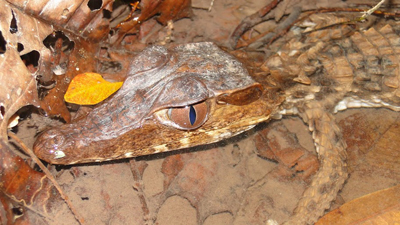Languages
Obtaining data and the biodiversity of the Amazon
Despite what might appear to be huge numbers of papers, research on Amazonian biodiversity is still in its early stages.

There are large gaps in what we know and also in the places that have been surveyed. In addition to these gaps there are problems with the organization of available information, the lack of proper infrastructure for collection and storage of biological material, and - especially important - the almost total lack of people qualified to perform these actions. Also, much of the information available was obtained long ago, and was not collected with the aim of solving specific problems associated with bio-prospecting, the ecological/economic zoning or use of natural resources by traditional groups.
In Amazonia, most of the territory is still under natural or semi-natural vegetation cover. Researchers studying the flora and fauna with the very diverse and species rich groups, and one of the major challenges is to organize, register and integrate the information obtained.
Developing integrated collection systems that meet the needs of different types of researchers is one way to use basic information on local species richness so that it can provide the kind of integrated results that can help ecological/economic bioprospecting and systematic zoning. Economies of scale and avoiding duplication of effort, means that an integrated design is likely to get more and better results in a short time, and at a lower cost than the current system of where researchers work independently and in a piecemeal manner.
However, the amount of work needed for the Amazon region is immense, so integrated sampling systems alone cannot be effective since the number of qualified researchers in the region is simply too small. This, combined with the practical and moral necessity of involving local people in the process of working with biodiversity, means that it is essential to provide training in regional technical centers so that local communities can be part of both the studies that register the regional biodiversity and the programs that use it.

